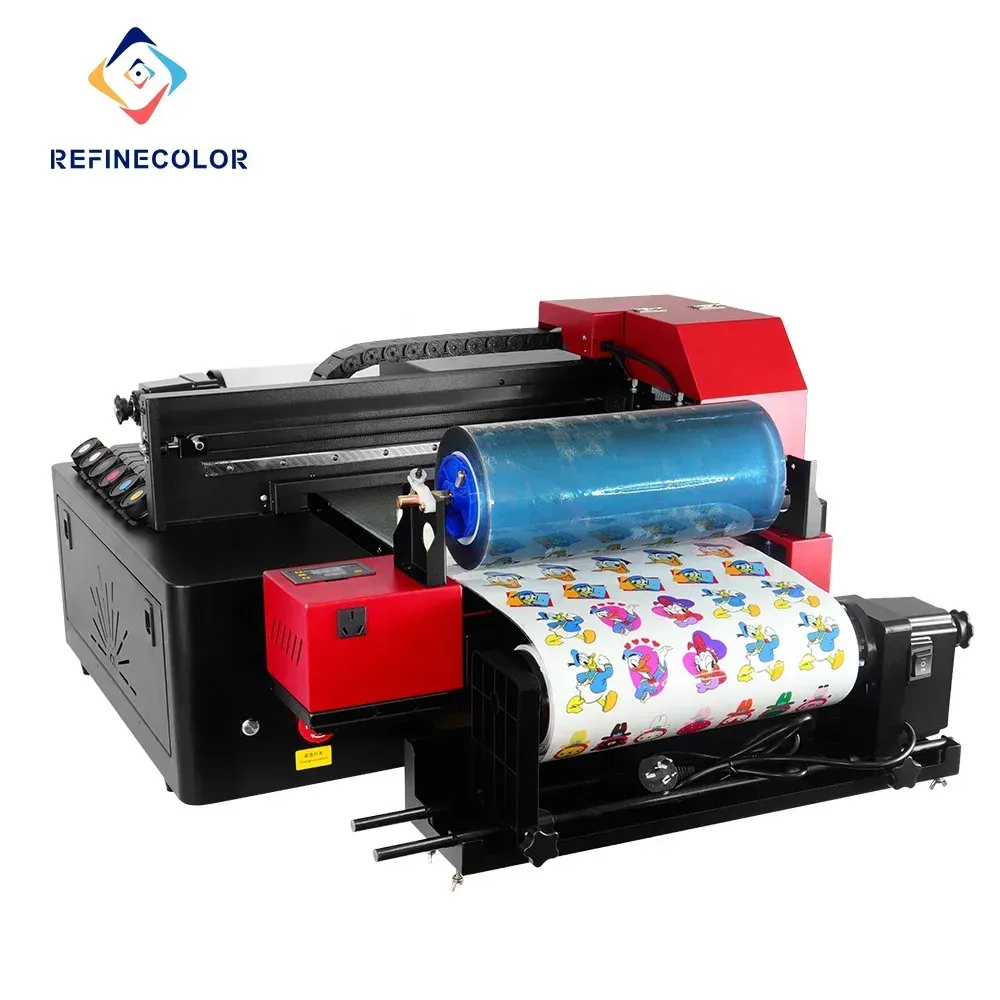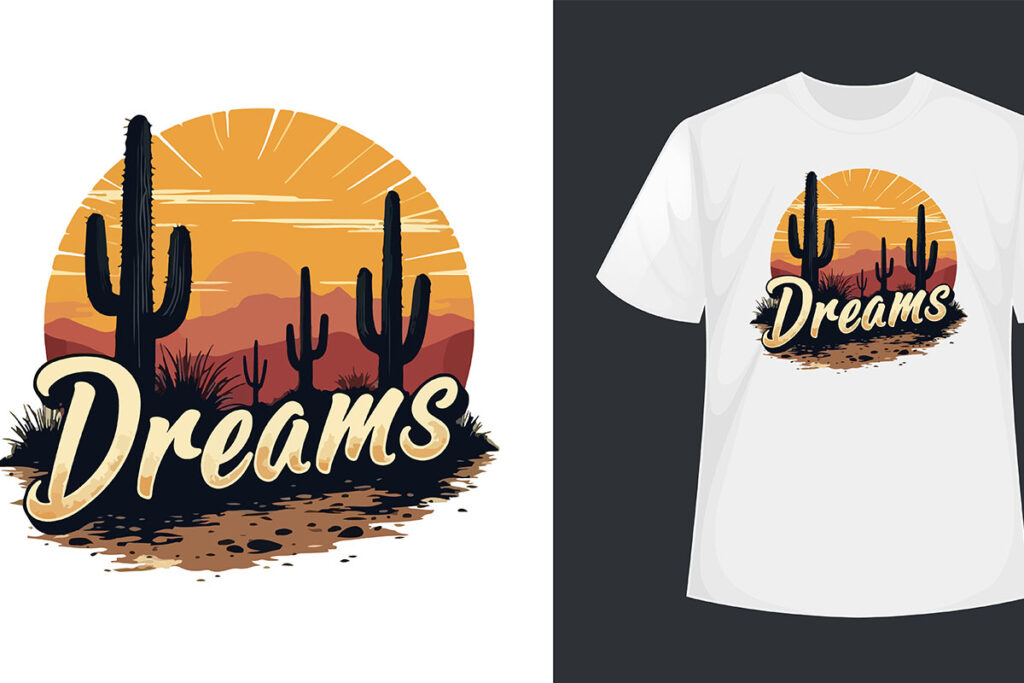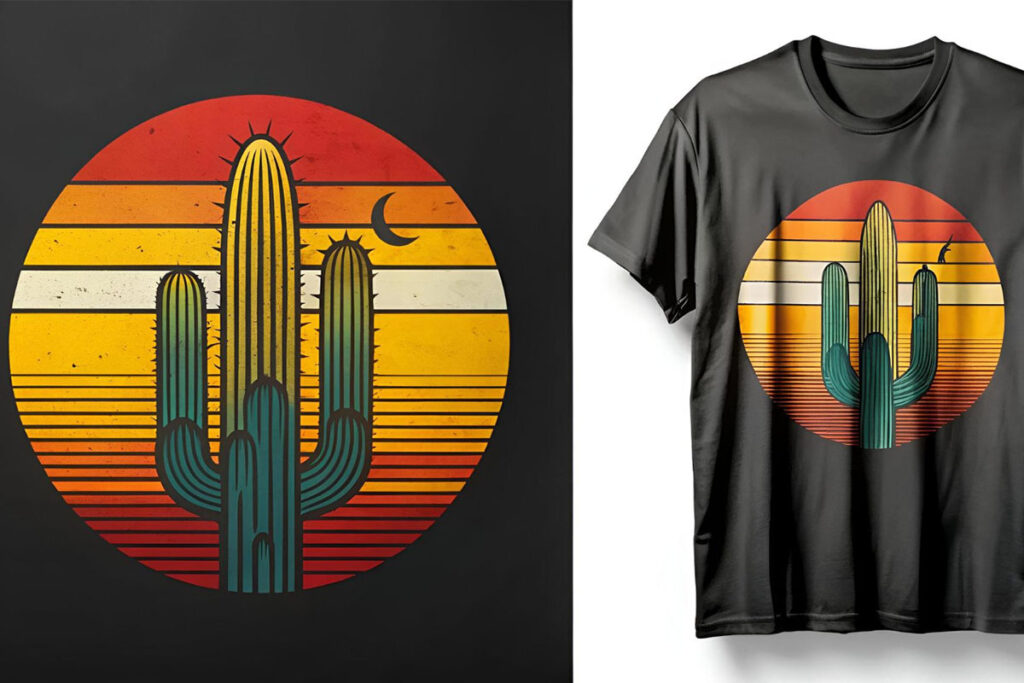When it comes to exploring modern printing solutions, **UV DTF** (Ultra Violet Direct to Film) is swiftly gaining recognition for its innovative approach. Unlike traditional printing methods that often rely on rigid processes, UV DTF uses ultraviolet light to instantly cure ink on film, offering enhanced durability and versatility. This cutting-edge technique allows for striking prints on an extensive range of materials, from metals to plastics, making it a game-changer for many businesses. Additionally, UV DTF showcases significant advantages in terms of speed and efficiency, often leading to quicker turnaround times compared to conventional techniques. As industries increasingly rely on high-quality, vibrant prints that last, the cost of UV DTF becomes increasingly favorable, positioning it as a formidable competitor against traditional printing options.
In the realm of printing technologies, **UV Direct to Film** stands out as a modern alternative to the classic printing techniques that have dominated the industry for years. Often referred to as advanced UV printing, this method capitalizes on the capabilities of ultraviolet light to create vivid prints that withstand the test of time. Unlike older techniques that may limit material choice and application versatility, UV DTF adapts to various substrates, catering to unique business needs. With a focus on rapid production and unmatched print quality, it’s no surprise that UV DTF is being embraced across diverse sectors. As we examine the nuances of printing methods today, it’s essential to consider how UV DTF compares to traditional options in terms of durability and cost-effectiveness.
UV DTF Printing Explained
UV Direct to Film (DTF) printing represents a significant advancement in the realm of print technology, harnessing the power of ultraviolet light to cure inks on a specially designed film. This innovative approach not only provides superior print quality but also expands the range of materials that can be printed. Businesses can now achieve vibrant colors and intricate details on various surfaces—from metal and glass to textiles—making UV DTF a versatile solution for diverse applications.
One of the distinguishing features of UV DTF is its immediate curing process, allowing businesses to produce prints in record time. Unlike traditional printing methods which may require longer drying times or additional steps for preparation, UV DTF efficiently streamlines the workflow. This swift processing not only enhances productivity but also supports just-in-time manufacturing and rapid project turnaround, which are essential in today’s competitive landscape.
Comparative Analysis: UV DTF vs. Traditional Printing
When comparing UV DTF printing with traditional printing methods, one must consider not only the production quality but also speed and cost-effectiveness. Traditional printing techniques, such as screen or offset printing, are tried and tested; they often excel in mass production scenarios where large quantities are needed. However, UV DTF offers a modern twist, allowing for lower minimum print runs while maintaining high-quality output, making it an attractive option for small businesses or custom jobs.
Furthermore, in terms of versatility, UV DTF shines brightly. While traditional printing tends to be restricted to specific materials like paper, UV DTF can seamlessly adapt to a wide array of substrates, including those that are challenging to print on with traditional methods. This adaptability not only opens new doors for creative projects but also allows businesses to cater to a broader customer base, enhancing potential sales and market reach.
The Cost Considerations of UV DTF Printing
Cost is always a pivotal factor in any business decision, and it plays a vital role in choosing between UV DTF and traditional printing. Although traditional printing might appear more economical for large volume runs due to lower unit costs, UV DTF offers competitive pricing for shorter runs and complex designs. The savings in material waste and the reduction in production time with UV DTF can be significant, offering businesses a more financially viable option without compromising quality.
Moreover, the durability of UV DTF prints adds additional value over time. Since the prints resist fading, scratching, and environmental damage, businesses can expect their printed products to maintain appeal longer, reducing the need for reprints or replacements. Understanding these cost dynamics can aid organizations in selecting the method that not only fits their budget but also aligns with their quality standards.
Durability and Longevity of UV DTF Prints
Durability is one of the most crucial attributes for printed materials, particularly when they are intended for outdoor use or high-wear environments. UV DTF printing provides remarkable resilience, ensuring that prints remain vibrant and intact regardless of exposure to harsh weather or abrasion. This longevity can make a substantial difference in overall customer satisfaction and brand perception, especially for products meant to last, such as signage and promotional items.
In contrast to traditional printing, which often relies on inks that may fade or degrade over time, the UV-cured inks used in DTF technology create a tough, protective layer that stands up to the rigors of daily use. Whether it’s branding on promotional merchandise or graphics on outdoor displays, investing in UV DTF printing guarantees that brands can maintain a professional appearance for an extended period—an essential factor in customer loyalty and business success.
Material Compatibility: Finding the Best Fit
Material compatibility is a significant consideration when choosing a printing method. Traditional printing methods are often limited to paper-based substrates, which can restrict creativity and application diversity. In contrast, UV DTF printing is acclaimed for its ability to print effectively on an extensive variety of materials, including flexible and rigid surfaces such as plastic, metal, wood, and textiles. This expansive range allows businesses to experiment with different products and markets.
Additionally, the ability to print on unconventional materials empowers businesses to offer unique, custom solutions that set them apart from competitors. The UV DTF method encourages innovation in product development, enabling companies to create personalized items that resonate with customers, cater to niche markets, and respond to current trends.
The Right Choice for Your Printing Needs
Ultimately, selecting between UV DTF and traditional printing requires careful consideration of your specific needs, including production volume, design complexity, and material types. Businesses looking for agility with shorter production runs or specialized designs may find that UV DTF is the most efficient choice, leveraging its strengths in versatility and quality.
Conversely, if your needs are more aligned with bulk production, traditional printing may still hold the edge in terms of cost per unit. However, as technology evolves, the gap between these methods continues to narrow. Assessing these factors allows businesses to make informed decisions, ensuring that they select the best printing solution to achieve optimal results.
Frequently Asked Questions
What is UV DTF printing and how does it compare to traditional printing methods?
UV DTF (Direct to Film) printing is a modern printing technique that uses ultraviolet light to cure inks onto a film, allowing for vibrant and durable prints on various materials. Unlike traditional printing methods, which typically rely on physical plates or screens, UV DTF offers greater flexibility in terms of substrates, enabling prints on plastics, metals, and glass. This technological advancement makes UV DTF a competitive option for businesses looking for speed and versatility in their printing.
How does the cost of UV DTF compare to traditional printing methods?
The cost of UV DTF can vary depending on factors like production volume and material types. While traditional printing may offer lower unit costs for large runs due to economies of scale, UV DTF excels in small to medium production quantities. The ability to print directly onto a wide range of materials with less setup time often makes UV DTF a cost-effective choice for diverse projects, especially those requiring customization.
What are the durability features of UV DTF compared to traditional printing?
UV DTF prints are known for their exceptional durability, resisting fading, scratching, and weather conditions, making them ideal for outdoor use and long-lasting applications. In contrast, traditional printing methods may not provide the same level of resistance, especially when using certain types of inks and substrates. Consequently, businesses requiring highly durable prints may prefer UV DTF for its reliable performance across various conditions.
Can UV DTF printing accommodate complex designs better than traditional printing?
Yes, UV DTF printing can handle complex designs with intricate details and a wide color range more effectively than traditional printing methods. This is due to its advanced technology, which eliminates the need for screens or plates and allows for direct digital printing. As a result, businesses can achieve vibrant, high-quality visuals without the limitations imposed by traditional techniques.
What types of materials can be used with UV DTF printing compared to traditional printing?
UV DTF printing is versatile and can print on a wide variety of substrates, including plastics, metals, wood, glass, and textiles. This broad compatibility contrasts with traditional printing methods, which are often limited to paper and cardboard. For businesses needing flexibility in their material choices, UV DTF is an advantageous option, allowing for creative applications across different industries.
Why is UV DTF considered a fast production method compared to traditional printing?
UV DTF is regarded as a fast production method because the curing process is instant due to the use of ultraviolet light. This immediacy allows for quicker turnaround times compared to traditional printing, which may involve lengthy drying processes. In today’s fast-paced market, the speed of UV DTF can provide businesses with a competitive edge, enabling them to meet tight deadlines efficiently.
| Aspect | UV DTF Printing | Traditional Printing |
|---|---|---|
| Technology Overview | Uses UV light to cure ink onto various substrates, allowing for vibrant prints on many surfaces. | Involves techniques like offset and screen printing using physical plates or screens to transfer ink directly. |
| Advantages | Durable, versatile, and immediate curing time leading to faster production cycles. | Cost-effective for large print runs, high color accuracy, and tactile quality in printed products. |
| Ideal Applications | Custom projects, outdoor signage, displays, and promotional items on diverse materials. | Large quantities like food packaging, promotional materials requiring consistent colors. |
| Considerations | Best for smaller runs, complex designs, and a wide range of materials. | Best for large scale and consistent designs primarily on paper and cardboard. |
Summary
UV DTF is a cutting-edge printing technology that offers businesses a combination of versatility and speed. In today’s competitive market, understanding the unique benefits of UV Direct to Film printing compared to traditional methods can significantly influence your business’s success. With its ability to produce vibrant, durable prints on a variety of materials quickly, UV DTF caters to modern demands for diverse applications, making it a compelling choice for those looking to innovate. Conversely, traditional printing maintains its appeal for projects requiring bulk production and precise color matching, particularly in well-established industries. Making an informed decision by assessing your specific requirements can lead to better outcomes in your printing endeavors.



